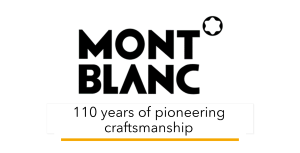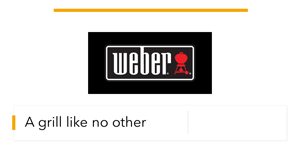What Does the Data Show?
Whatever your needs, you’ll hopefully find a stat, study or survey here that will help you solidify your case and achieve your objectives

When you work in an industry that’s called upon to justify its existence at every turn, data is ammunition. Experienced motivation professionals know that the right statistic placed at just the right point in a presentation can resonate with a client or prospect, magically transforming itself into the lynchpin that secures the deal.
With that in mind, here’s a look at some of the key research on engagement, rewards & recognition and management, as well as some of the major trends – business and technological – that are likely to have an impact on companies in the engagement and motivational marketplace.
Incentives, Rewards, and Recognition
The mindset in the C-Suite has shifted from “recessionary” to a focus on “innovation and growth.”
- PricewaterhouseCoopers, 17th Annual Global CEOSurvey, 2014
Noncash reward and recognition programs have helped create brand advocates, resulting in a 35% increase in customer service, as well as a 63% increase in productivity.
- World at Work, Trends in Employee Recognition, June 2013
48% of respondents anticipate the impact of the economy will have a positive effect on their ability to plan and implement merchandise/noncash incentive programs.
- IRF, Fall Pulse Survey, 2014
81% of CEOs say they’re concentrating on talent, a position rivaled only by technology investments. In fact, 90% of the CEO’s say they’re changing their strategies for attracting and retaining talent. Unlike technology however, 61% haven’t taken the first step to change their current approach.
- PricewaterhouseCoopers, 17th Annual Global CEOSurvey, 2014
The most popular types of merchandise for incentive programs are electronics (43%), open-loop gift cards (40%) and jewelry/watches (34%).
- IRF, Fall Pulse Survey, 2014
Organizations that implement noncash reward and recognition programs have annual revenue increases averaging of 9.6% vs. just 3% for all other companies – more than three times higher.
-Aberdeen Group/IRF, Rewards & Recognition as a Vital Compensation Component, 2012
Incentive Travel and Meetings
Planners are investing in more robust experiences for their programs: 1 in 5 say they will be moving some of their programs to “all inclusive” experiences, and more than 15% of say they’ll be increasing their onsite inclusions.
- IRF, Rebounding the Recession: The Future of Incentive Travel, 2014
Most organizations (60%) offer travel rewards to top performers and nearly all (90%) conduct offsite business meetings.
- IRF, Striking the Balance: The Integration of Offsite
Business Meetings and Incentive Group Travel, 2013
66.7% of respondents indicate they continue to be optimistic and feel the economy is having more of a positive impact on their ability to plan and implement incentive travel programs.
- IRF, Fall Pulse Survey, 2014
30% of planners put a focus on wellness, and qualitative research shows that many planners have come to expect wellness options as a basic part of their meeting options, whether they choose them or not.
- IRF, Rebounding the Recession: The Future of Incentive Travel, 2014
The policy of combining meetings and incentive events has been adopted by about half of U.S. organizations, but only 10% do so to save money, reap tax benefits or address the criticism surrounding incentive group travel. More than 40% do so in order to maximize their investment in meetings and travel rewards and/or to take advantage of having high performers in the same place and at the same time as top executives.
- IRF, Striking the Balance: The Integration of Offsite
Business Meetings and Incentive Group Travel, 2013
46% of planners anticipate no change with respect to destinations for incentive travel programs in the coming year, but 15% say there will be a shift from domestic programs to more international programs.
- IRF, Fall Pulse Survey, 2014
Given the need to attract and retain top performers and the underlying need to “train up” a generation of Millennials, executives are looking to proven tools such as incentive travel programs for transferring best practices from top employees to up-and-comers.
- IRF, Rebounding the Recession: The Future of Incentive Travel, 2014
Of those who have participated in a combined incentive travel/offsite business meeting program in the past, almost 95% say it was either a good combination or a nice way to recognize top performers in front of peers and executives.
- IRF, Striking the Balance: The Integration of Offsite
Business Meetings and Incentive Group Travel, 2013
The top destinations for incentive travel programs are the Caribbean (47%), followed by North America (43%) and Europe (34%).
- IRF, Fall Pulse Survey, 2014
Gift Cards
45% of companies are using gift cards as a reward, with the largest companies (more than $100 million annual revenue) using them at a rate of 56%.
- IGCC, B2B Gift Card Marketplace study, 2014
With regard to merchandise/noncash incentive programs award selection, 19% of planners see increased use of debit/prepaid gift cards
- IRF, Fall Pulse Survey, 2014
Of companies using gift cards, more than two-thirds (67%) are using them as employee incentives, followed by sales incentives (38%), customer rewards (30%) and channel incentives (8%).
- IGCC, B2B Gift Card Marketplace study, 2014
78% of consumers aged 18-25 prefer to redeem a digital gift card via their phone.
-InComm, Digital Gift Cards Growing More Popular, 2014
Gift cards awarded as sales incentives carry the highest average value ($149), followed by channel incentives ($84), employee awards ($70) and customer rewards ($56).
- IGCC, B2B Gift Card Marketplace study, 2014
“Open loop” gift cards – those issued by banks and credit card companies which can be redeemed virtually everywhere – dominate the types of gift cards businesses are purchasing for incentive and loyalty rewards, varying from 56% to 62%, with the largest companies purchasing the majority of open loop cards.
- IGCC, B2B Gift Card Marketplace study, 2014
Technology
37% of planners indicate they incorporate corporate social responsibility (CSR) and gaming elements into their programs.
- IRF, Fall Pulse Survey, 2014
The future of recognition and communication games in the workplace could be very bright considering that 90% of Gen Y’ers desire co-workers who make the job fun; 49% of Gens X & Y in the workforce (ages 18 to 49) play online games; 26% of thoise aged 50 and over play online games; and women now account for 40% of the gaming community.
- Pew Research, The Future of Gamification, 2012
Just under half of respondents (46%) indicate they use social media tool/techniques to enhance their incentive programs.
- IRF, Fall Pulse Survey, 2014
The insertion of social media into the total experience (onsite as well as within pre- and post-event communications) is a major development, with 60% of planners using social media in this fashion. In addition, roughly one-third of planners report integrating gaming techniques and/or virtual elements into their programs.
- IRF, Trends in Engagement, Incentives & Recognition, 2014
Engagement
Workers age 40 and older are the most engaged and demonstrate the highest level of organizational commitment; those age 50 and older are the most satisfied with their jobs.
- Sloan Center on Aging & Work, Generations of Talent study, 2013
Researchers examining the three main drivers of recognition – inclusiveness, communication and trust – found that each factor has important aspects that can power up or power down the effect of recognition on employee engagement. This “virtuous circle” represents one of management’s most potent tools for focusing employees on what matters to the enterprise and reinforcing the behaviors that contribute most directly to strategic success.
- Towers Watson, Turbocharging Employee Engagement, 2013
Research shows a link between highly engaged employees and improved health and overall well-being. Those working at high-engagement organizations reported better physical health: 56% vs. 47%. Job stress levels were lower, too. Only 28% of employees at high-engagement locations reported high job stress, as opposed to 33% at moderate-engagement firms and 39% of those at low-engagement companies.
- Aon Hewitt, Best Employers in Canada study, 2013
Operating income at companies with high levels of employee engagement improved 19.2%, while low-engagement companies reported a drop of 32.7%. Net income for high-engagement companies advanced 13.2%, while the low-engagement companies saw a decline of 3.8%. High-engagement companies had EPS growth of 27.8%, while companies with low employee engagement reported an 11.2% decline.
- Towers Perrin-ISR, Engaged Employees Drive the Bottom Line, 2012
Distilling the Data
Looking at the new website of the Incentive Research Foundation and analyzing all of the research conducted to date, the conclusions outlined below emerge – with one important caveat: Rewards have the most sustainable benefits when used as part of overall programs that address all of the relevant levers of engagement and conditions needed to achieve the desired result.
- Noncash rewards can play a significant role helping to address the elements of emotion, fun and support needed to sustain passion over time in engagement programs aimed at achieving often-changing goals.
- In order to have the desired emotional and economic results, rewards for customers, distribution partners, employees and vendors need to be carefully distinguished from compensation, yet clearly related to specific accomplishments or loyalty that has helped the organization.
- Under the right program structure, noncash rewards actually appeal to both intrinsic and extrinsic motivation by demonstrating that the organization means it – the pat on the back, plaque or pin, 10% discount or letter from the president begins to ring hollow after awhile. Rewards thoughtfully selected with high-perceived value make sure people know the organization is sincere.
- Rewards should generally be connected with measurable results or actions important to the organization in a transparent way and communicated to all involved.
- The more rewards become confused with compensation, the more they become expected and ineffective.
- The more carefully rewards are selected, the more thought given in their presentation in a way that involves significant others, the greater chance that recipients will experience a lasting impression that helps sustain future efforts.
- Do-this, get-that, carrot-focused campaigns can generate short-term results but are not sustainable unless part of strategies that address all of the levers and conditions necessary to connect engagement with performance.
- When asked, people will always say they prefer to be rewarded in cash. The question and answer are irrelevant. Rewards are gifts, not compensation, bonuses, or price promotions. If people didn’t appreciate gifts, more than 30% of the retail marketplace would disappear overnight.


















